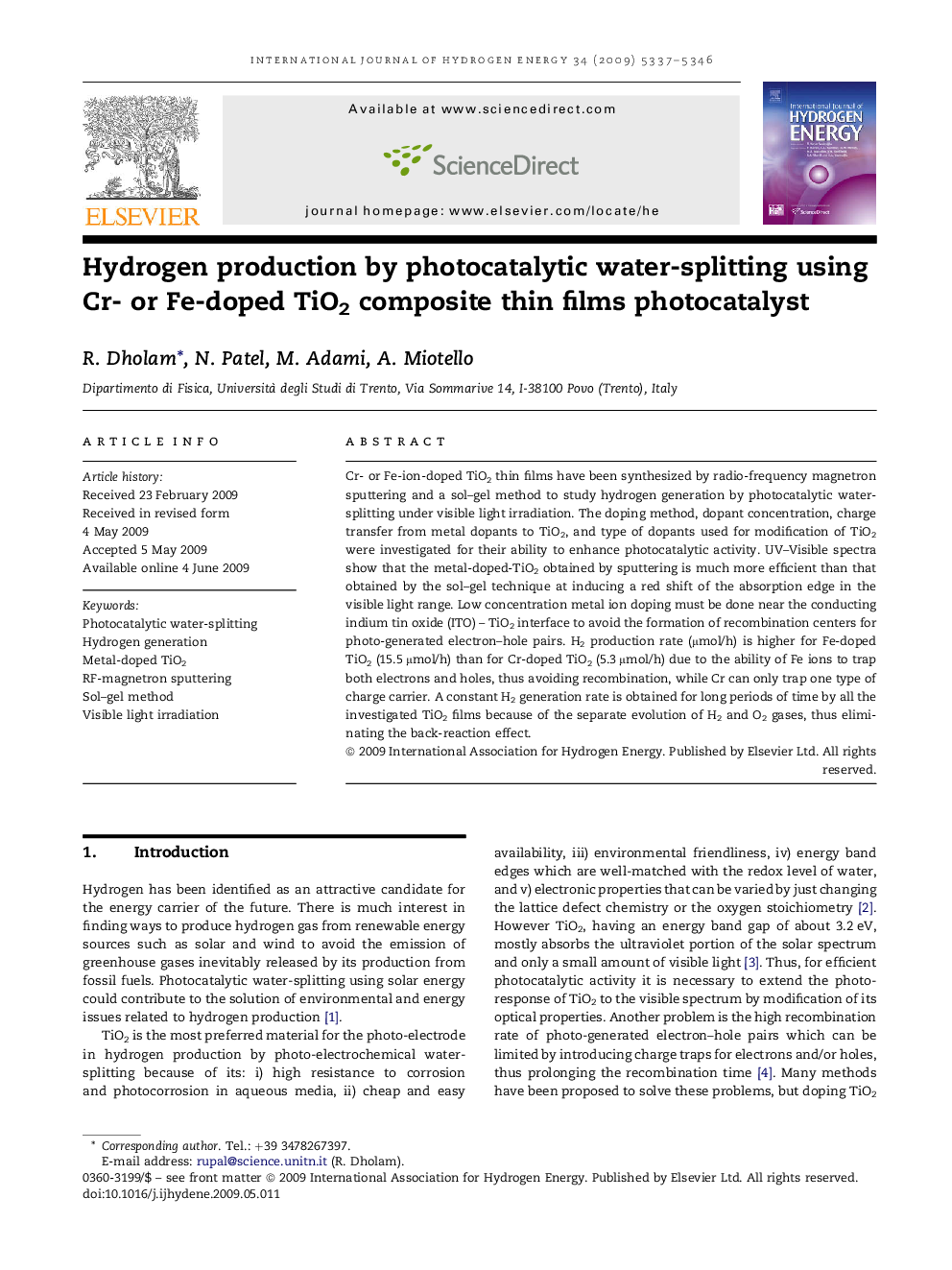| Article ID | Journal | Published Year | Pages | File Type |
|---|---|---|---|---|
| 1283181 | International Journal of Hydrogen Energy | 2009 | 10 Pages |
Cr- or Fe-ion-doped TiO2 thin films have been synthesized by radio-frequency magnetron sputtering and a sol–gel method to study hydrogen generation by photocatalytic water-splitting under visible light irradiation. The doping method, dopant concentration, charge transfer from metal dopants to TiO2, and type of dopants used for modification of TiO2 were investigated for their ability to enhance photocatalytic activity. UV–Visible spectra show that the metal-doped-TiO2 obtained by sputtering is much more efficient than that obtained by the sol–gel technique at inducing a red shift of the absorption edge in the visible light range. Low concentration metal ion doping must be done near the conducting indium tin oxide (ITO) – TiO2 interface to avoid the formation of recombination centers for photo-generated electron–hole pairs. H2 production rate (μmol/h) is higher for Fe-doped TiO2 (15.5 μmol/h) than for Cr-doped TiO2 (5.3 μmol/h) due to the ability of Fe ions to trap both electrons and holes, thus avoiding recombination, while Cr can only trap one type of charge carrier. A constant H2 generation rate is obtained for long periods of time by all the investigated TiO2 films because of the separate evolution of H2 and O2 gases, thus eliminating the back-reaction effect.
